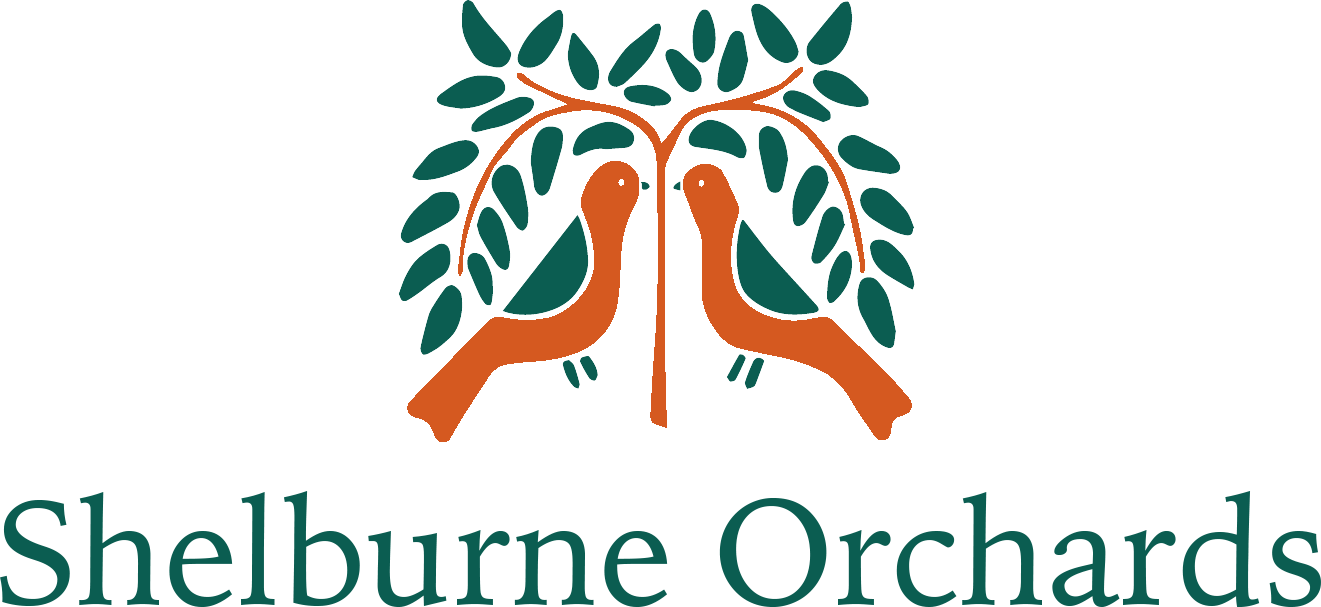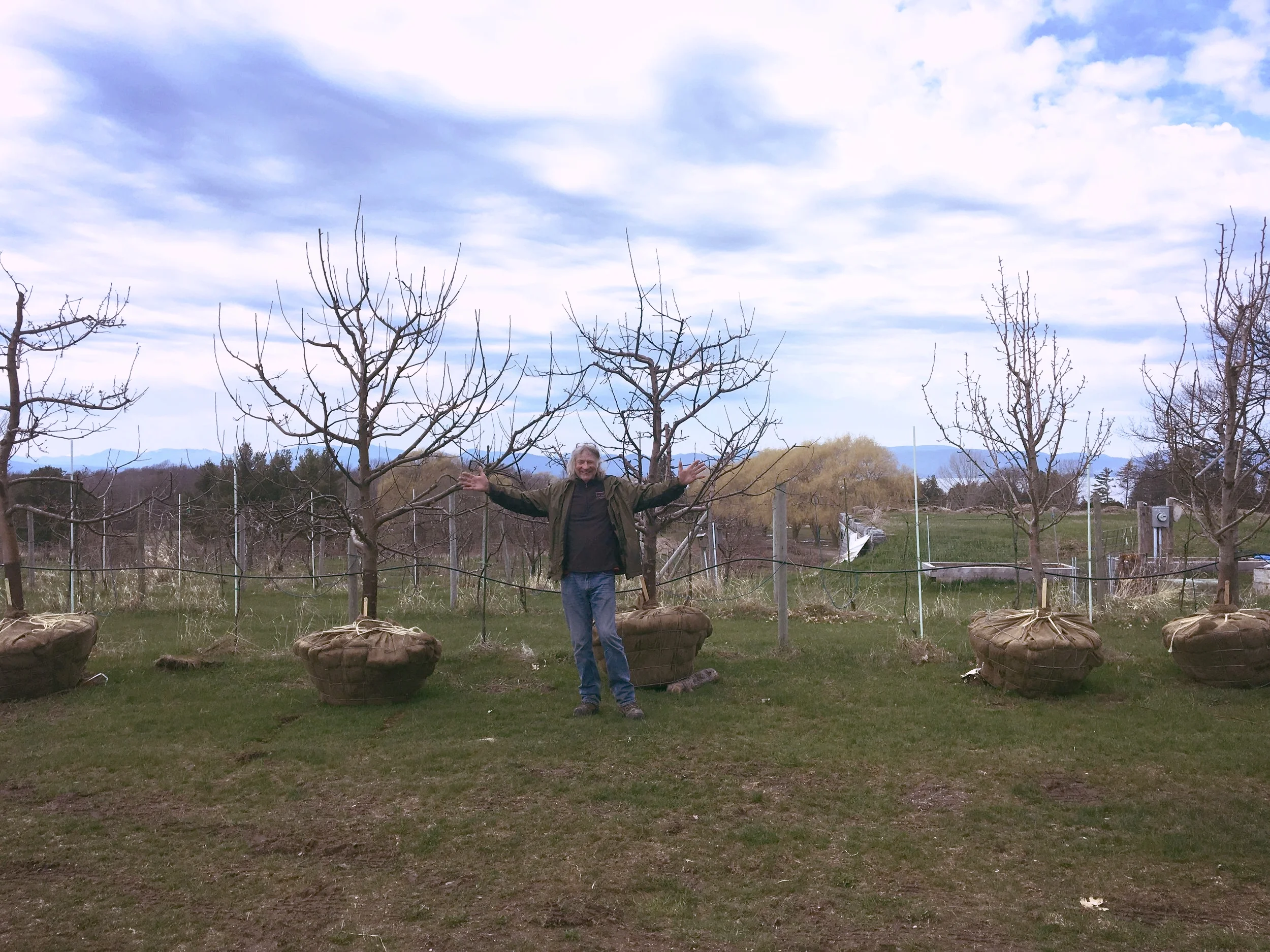Shelburne Orchards
TREE PLANTING INFO
Where should I plant my tree?
1. SUN:Plant it in a location where it gets full sun. It shouldn’t be in a place where there it only gets sun for part of the day.
2. NOT IN A LOW POINT: Frost likes to settle in low points, in small valleys, and at the bottom of hills. Plant your tree either at the top of a hill or on the side of the hill so that the frost settles below it.
3. WELL DRAINED:Ok, this is where soil comes in. Ideally, as stated above, you already have your tree located on the top or side of a hill for frost protection. The next, and arguably most important variable to think about is what kind of soil it’s going into. You can read books on this, but for now, I’ll keep it simple.
The soil where these trees are coming from is a light, well-draining sandy loam soil. Ideally your tree could find a spot with similar soil. However, if the soil at your planting location is clay, or anything heavier than sandy loam, you are going to need to plant the tree a bit raised. To do this, plant the tree in a hole that is half as deep as the root ball, so that when the tree sits in its hole, the half of the root ball sits above the ground. Once you remove parts of the burlap and basket, you will want to bring in topsoil and feather it around the tree making a gradual hill up to the tree. This allows the roots an option to sink into the heavier soil when it’s ready, but they also have another more similar environment to move into. The WORSTthing you can do is plant your tree fully in a deep clay hole. It will not drain easily and you are essentially putting it into a clay bowl of water once you water it. It will drown. If there is any question, err on the side of planting it shallow and feathering around it.
4. How close to other apple trees?You can plant your apple trees as close as 12-15 feet to other apple tree, but not closer.
5. Pollination: Usually there are other apple or crabapple trees within the ¼ mile bee flight distance away from most locations. But, if you’re not sure, it might be good to plant another apple or crabapple tree of a different variety on your property to ensure that you’re apple blossoms get pollinated.
How to plant the tree?
1. Dig your hole: The size of the hole depends on the size of the root ball. For 4+” caliper trees, the root balls are usually 40 inches, and therefore the hole should be 4 feet wide, while the trees below 4” caliper should have 32 inch root balls and need a 3 foot wide hole. You can ask us when we call to schedule delivery what size root ball(s) you have. Depth: As we talked about above, this depends on the soil. In light soil, the top of the root ball should be level with the ground, which is about 18” for the 40 inch root ball and 12” deep for the 32 inch root ball, and about half of that in heavier soil. See the section on drainage above for more info.
2. Unload: Get your tree into the hole with the burlap and wire cage still on it. There are several ways of doing this, I won’t go into detail here because it depends on what equipment you are using.
3. Straightening the tree: Try to ensure that the tree lands upright as it is harder to straighten once it’s in the ground. DO NOT use the trunk or any part of the tree to try to straighten it. This could break the tree.Use the wire basket to move the root ball in such a way that the whole tree will become straight. You can use a chain and the bucket that you used to unload your tree.
4. Burlap and Wire: Once the tree is where you want it, use wire cutters to take the wire cage off as far down as you can, and a knife to do the same with the burlap. The rest can stay in ground.
5. Cover:Once the burlap and wire are off, cover the rest of the hole with soil, and lightly tamp it down, or bring in topsoil and feather it as we stated in the ‘well drained’ section.
6. WATER: Once you’ve planted your tree, give it a good long soak. It should get watered with a good soak every week to 10 days after this first watering, which could include a solid rain event every week to 10 days.
7. Fertilizer: NO! It’s best not to fertilize within the first year that the tree has been planted. After about a year, or 2-4” of new terminal growth, you can top dress with compost or fertilizer around the drip line of the tree. You can put mulch around the top if you want to help keep moisture in.
8. Stake: If you have your tree in a shallower hole, it might be a good idea to stake your tree, especially if it’s in a windy location. This can be done with 3 stakes and wire, (with hose around the wire where it touches the tree) to keep the tree from knocking over while it’s establishing its roots in its new home.
9. Mouse guard: **There are very few things that can kill an apple tree. The two things that will guarantee to kill an apple tree are 1- getting girdled, and 2- being too wet. In the winter, mice and voles love eating the bark of apple trees for dinner. If they succeed and eat around the entire circumference of the tree, this is called being girdled, and it will kill the tree. If they just eat some of the bark, the tree will be hurt, but it will survive, but you want to keep them away if you can.
To do this, make sure to mow around the trunk of your tree. Then put some sort of mouse guard around the base of the tree for the winter. Metal screen works really well, as long as it sits in the soil so the mice can’t get underneath it. It should be about 18” tall so the mice can’t get above it.



